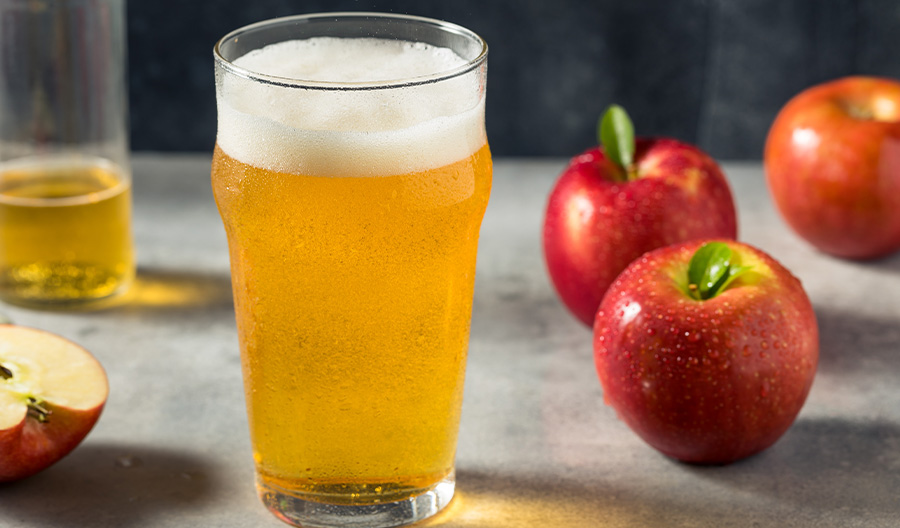From the exaggerated legend of Johnny Appleseed, whose real name was John Chapman, to the image of a steaming apple pie fresh out of the oven, American history is intertwined with apples.
A popular product of this fruit, cider, also has an important role in U.S. history. It holds stories of agricultural advancement and destruction, cultural collaboration and erasure, as well as ongoing battles among industrialism, individualism, and craft.
Indigenous Americans’ Contributions to Cider
White settlers often get the lion’s share of credit for early cider, but the drink wouldn’t be what it was or is today had it not been for enslaved people and Indigenous tribes of North America. Unfortunately, the breadth of their contributions may never be known due to lack of record-keeping and willful erasure.
In the early 1600s, when colonists were starting to settle what is now Virginia and other states in the Southeast region of the U.S., plantation owners often planted apple orchards to increase their property’s value. To maintain these trees, landowners relied on enslaved people, indentured servants and the forced labor of Indigenous people, according to American Cider: A Modern Guide to a Historic Beverage.
Tragically, these workers and their expertise were forcibly relocated from the region in 1830, when the Indian Removal Act evicted Cherokee and Creek people from what is now North Carolina and Tennessee. “People went through afterwards and found a lot of [apple] varieties that they had cultivated,” says Dan Pucci, co-author of American Cider.
Jarvis Van Buren (1801–1885), a nurseryman from Georgia and cousin to eighth U.S. President Martin Van Buren, realized that these new varieties had a longer shelf life than most fruits at the time. After collecting seeds and trees, he “began cultivating them commercially in Georgia in the 1850s,” says Pucci. Van Buren went on to start Gloaming Nursery, which helped usher in a new age where the South was no longer as dependent on apples from the North. His business, however, was built on the trees Indigenous Americans had cultivated.
We see the impacts of Indigenous Americans in cider today. For instance, Washington statewas home to “the oldest domestic fruit tree,” which was brought to the United States in 1826. Sadly, it died two years ago. But it was cultivated by Indigenous populations, this tree “is the likely progenitor of today’s $3.4 billion apple industry of Washington,” writes Mary Rose for Confluence Library.

The Future of American Cider
Today, “there are around 1,000 cideries in the United States,” says Michelle McGrath, executive director of the American Cider Association. However, “it’s incredibly difficult to estimate because cideries, at the federal level and at most state levels, operate under a winery license.”
But between 2011 and 2019, around 600 cideries debuted in the U.S., according to data from the American Cider Association.
McGrath believes craft beer plus the gluten-free and local food movements paved the way for cider’s growth over the last decade or so. If you combine these three things, she says, “cider makes a lot of sense.”
As the U.S. market for and interest in cider continues to expand, cider professionals see an opportunity to keep the beverage connected to its cultural and agricultural history.
“I think we are at an inflection point where we are getting ready to see phase two of the U.S. cider boom,” says McGrath. “And phase one was all about introducing America to cider. It wasn’t part of our recent memory. And it was just reminding people that cider exists. Now we’ve got two generations who are what I call ‘cider natives.’ They grew up going to cider bars, they grew up going to cideries—it’s just part of the culture. And so, the next phase is going to be more about the nuances of cider. Understanding that the apple choices really matter, understanding that there’s some regionality, but also discovering and embracing what is American style [cider].”
Pucci agrees.
“We’re going to see a lot more development of individuality within the product,” says Pucci. He notes that cider makers across the country have replanted trees and are utilizing new resources to truly make the product their own.
“That’s really going to change the game across the country,” he says.
As more places start to produce cider, it’s important to remember cider’s deep American roots, too. There’s greatness and darkness to every corner of history, and part of appreciating cider and its place in American life is acknowledging all facets of its origins and evolution.

